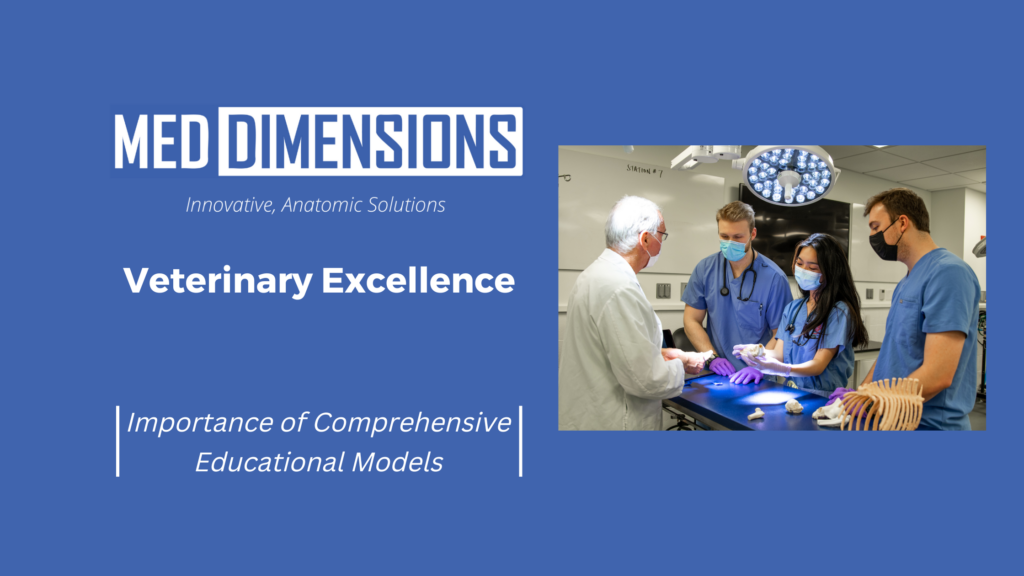Veterinary Excellence: Importance of Comprehensive Educational Models

In the intricate realm of veterinary medicine, education stands as the cornerstone of proficiency and confidence among veterinarians, technicians, aides, and students. As the bond between humans and animals deepens, the demand for skilled professionals capable of handling diverse medical procedures continues to surge. Within this dynamic field, the significance of robust educational models cannot be overstated. Let’s delve into the pivotal role these models play in nurturing expertise, fostering confidence, and honing a wide array of techniques crucial for delivering optimal care to our furry companions.
At the heart of any effective veterinary educational model lies a comprehensive foundation of knowledge. Whether it’s understanding the anatomy of different species, grasping the intricacies of various diseases, or mastering pharmacology, a strong theoretical groundwork is indispensable. By immersing students in rigorous academic curricula, these models instill the fundamental principles essential for sound decision-making and problem-solving in clinical settings.
Theory alone, however, is insufficient in preparing veterinary professionals for the challenges they’ll encounter in the field. Practical, hands-on experience is equally vital. Veterinary educational models recognize this necessity and integrate experiential learning opportunities into their programs. From simulated surgeries and diagnostic procedures to rotations in clinical settings, students are provided with invaluable hands-on experience under the guidance of seasoned professionals. This immersive approach not only enhances technical skills but also cultivates the confidence needed to tackle real-world scenarios with poise and competence.
In today’s rapidly evolving landscape, technology continues to revolutionize veterinary medicine. From advanced imaging modalities to cutting-edge surgical techniques, staying abreast of technological advancements is imperative for delivering top-notch care. Veterinary educational models adapt accordingly, incorporating training modules that familiarize students with the latest innovations in the field. By exposing learners to state-of-the-art equipment and software, these models ensure that graduates are well-equipped to leverage technology in the diagnosis, treatment, and management of animal health issues.
Veterinary medicine is inherently interdisciplinary, often requiring collaboration between veterinarians, technicians, aides, and other allied professionals. Recognizing the importance of teamwork and effective communication, educational models emphasize the value of interdisciplinary collaboration. Through collaborative projects, case studies, and interactive workshops, students learn to work seamlessly across different roles and specialties, harnessing the collective expertise of the veterinary team to deliver comprehensive care.
The journey towards excellence in veterinary medicine doesn’t end with graduation. Lifelong learning and professional development are integral components of a successful veterinary career. Educational models that prioritize continual learning empower graduates to stay abreast of emerging trends, refine their skills, and pursue advanced certifications or specializations. By fostering a culture of lifelong learning, these models ensure that veterinarians, technicians, and aides remain at the forefront of veterinary practice, delivering the highest standard of care throughout their careers.
In the ever-evolving landscape of veterinary medicine, educational models serve as the bedrock upon which the future of the profession is built. By imparting knowledge, fostering hands-on experience, embracing technological advancements, promoting interdisciplinary collaboration, and nurturing a culture of lifelong learning, these models equip veterinary professionals with the skills, confidence, and expertise needed to excel in their roles. As guardians of animal health and welfare, veterinarians, technicians, and aides play a vital role in enriching the lives of both animals and their human companions, and it is through comprehensive educational models that they are prepared to meet the challenges and opportunities that lie ahead.